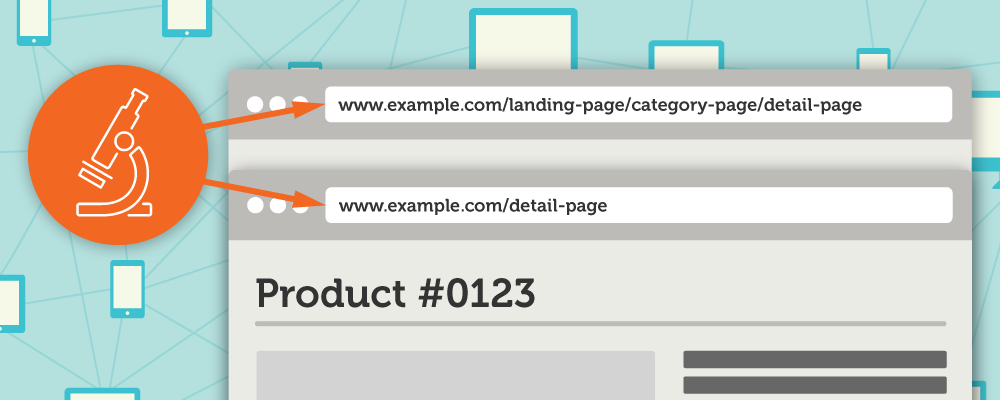Growth, Strategy
Designers meet SEO series: URL structure

Web designers and developers often work separately from those who focus more on strategy for SEO, paid media, or social media. There are a lot of reasons why this occurs (large companies with independent teams lacking full communication, outsourcing to vendor, etc.), and the separation is easy to understand because these positions utilize different skill sets and are driven by different trends. As a result sometimes there are misunderstandings and questions about what digital strategists do. In a short series of blog posts, I’ll respond to some common questions and misconceptions, providing a little insight into some of the latest best practices and strategies. This week I’ll be responding to a question about setting up URLs.
What’s the best way to structure URLs?
One question we’ve received in the past asks, “what is the best way to structure URLs?” Traditionally, you see websites structure their URLs and content in directories and subdirectories like this:
- www.root-domain.com/category-page/product-page
- www.example.com/blog/blog-post
But we’ve had clients in the past request to have or want to know if there is any SEO benefit to having interior pages directly after the root domain, like this:
- www.example.com/product-1
- www.example.com/product-2
Is there a black & white, right & wrong answer? Technically no. You can certainly set up a website with all interior pages published directly after the root domain, perhaps if you have only a handful of pages on a small site. There is no additional SEO benefit however to setting it up this way. If you have enough content that falls under different categories, you are going to be using a directory structure.
Users are accustomed to a folder structure on websites. It helps to continue that trend to prevent any negative user experience on your site. In addition, setting up a folder structure allows you to have breadcrumb navigation (another feature for a better user experience) and a special appearance of those breadcrumbs in search results.
There is one caveat to the folder structure. Google’s official SEO guidelines suggest not having URLs with extremely deep folders paths, in fact no more than 6 folders deep:
- www.example.com/dir1/dir2/dir3/dir4/dir5/dir6/page.html
What else should I know about URLs?
URLs are an important piece to SEO, so there are several other important factors and basic best practices to remember:
- Make them relevant: URLs that contain keywords relating to its page will help both users and search engines better understand what that page is about. Avoid using generic names (like page1.html), excessively long URLs with unnecessary parameters at the end (/product_id=32&highlight=green+dress&cat_id=1&sessionid=123&affid=431) and overuse of terms (like /shoes-mens-mensshoes-dressshoes-mensdressshoes.html).
- Have one version: Ideally, each page on the site would have one unique version. Duplicate URLs for the exact same page content can confuse search engines to which is the main version, resulting in each duplicate being indexed and the SEO value being diluted across them. The best solution is to use a 301 redirect from a duplicate to the main version. You can also add a rel=“canonical” tag on the duplicate, which indicates the main version to trust for that content.
- Use lowercase: One of the causes of duplicate content is the use of various capitalized words in URLs – /MensDressShoes.html. Stick with lowercase URLs by default not only for search engines, but for users as well.
Whether it’s providing a good user experience or ensuring search engines can clearly understand and index your site, URLs are important. Focusing on getting them right from the beginning can have a huge impact.












